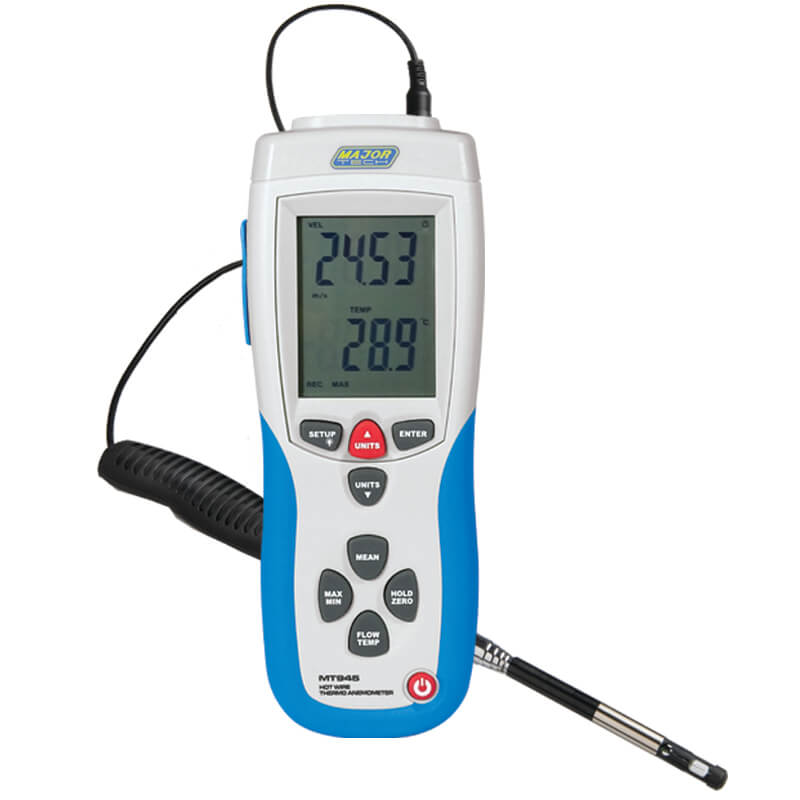Contrasting Digital and Mechanical Anemometers: Which is Right for You?
Contrasting Digital and Mechanical Anemometers: Which is Right for You?
Blog Article
All You Need to Find Out About Anemometers: Exactly How They Function, Why They Issue, and Where to Make use of Them
Anemometers, however typically overlooked in the world of scientific instruments, play a vital function in numerous fields, using valuable understandings right into wind rate and air movement patterns. Comprehending the mechanics behind these gadgets is essential for any individual looking for to harness the power of this data. From meteorologists tracking climate patterns to engineers making frameworks with wind tons in mind, the applications of anemometers are diverse and far-ranging. As we delve into the intricacies of anemometer modern technology, we will certainly reveal the internal workings of these tools, their importance, and the crucial factors to consider when choosing the best anemometer for particular applications.

Anemometer Fundamentals
An important tool made use of to measure wind rate and instructions, the anemometer plays an important duty in meteorology and different sectors. An anemometer generally consists of 3 or 4 mugs that rotate in the wind, a vane that points right into the wind, and sensing units to track the activities or rotations.
There are different sorts of anemometers available, consisting of mug anemometers, vane anemometers, hot-wire anemometers, and sonic anemometers, each with its distinct attributes and applications. Cup anemometers are frequently used for standard wind rate dimensions, while vane anemometers are chosen for directional dimensions. Hot-wire anemometers are suitable for low airspeeds, and sonic anemometers are optimal for high-precision measurements in research study and commercial settings. Understanding the essentials of anemometers is necessary for exact wind information collection and analysis throughout different sectors.
Principles of Anemometer Operation
Structure on the fundamental understanding of anemometer basics, the concepts of anemometer procedure clarify the mechanics behind wind rate and direction dimensions. Mug anemometers, for instance, have 3 or more mugs that catch the wind, creating them to spin quicker as the wind rate boosts. Hot-wire anemometers depend on a heated wire that cools down as wind passes over it, with the rate of cooling establishing the wind rate.
Importance of Anemometers
Anemometers play a vital function in gauging wind speed and direction, providing essential information for climate projecting, climate studies, ecological tracking, and air travel operations. Meteorologists depend on anemometers to gather exact wind information, aiding them understand weather patterns, predict storms, and issue prompt cautions to the public. Wind ranch drivers use anemometers to examine wind conditions and optimize electrical energy production from wind generators.
Applications Throughout Numerous Industries
Applications of anemometers span across varied sectors, showcasing their convenience and utility beyond weather forecasting. In the renewable power market, anemometers play an important duty in examining wind conditions for wind ranch placements, guaranteeing optimum energy manufacturing. Industries like building and mining make use of anemometers to keep an eye on wind speeds, critical for safety and security methods, particularly when operating at elevations or in open-pit mines where solid winds can position hazards. Anemometers are also integral in the air travel industry, assisting pilots in recognizing airspeed and wind instructions for risk-free take-offs and touchdowns. The maritime sector take advantage of anemometers for ship navigating, helping sailors anticipate weather condition modifications and readjust routes appropriately. In farming, anemometers help farmers in handling plant splashing by offering real-time data on wind speed to avoid drift. Anemometers find applications in Heating and cooling systems to enhance air flow and enhance power efficiency in structures. The diverse usage cases Read Full Article of anemometers underscore their value throughout numerous industries, highlighting their indispensable role in improving operational safety and security and efficiency (anemometer).

Choosing the Right Anemometer for Your Demands
Selecting the ideal anemometer tailored to your specific demands is essential for getting exact wind rate and direction measurements. When choosing an anemometer, take into consideration aspects such as the designated application, required measurement variety, environmental problems, and wanted features. For general purposes, a mug anemometer is appropriate for measuring wind rate, while a vane anemometer supplies wind instructions information. Hot-wire anemometers are optimal for reduced airspeed dimensions, and ultrasonic anemometers provide high precision and sturdiness.

Conclusion
To conclude, anemometers play an important function in measuring wind rate and instructions throughout different markets. Comprehending the principles of anemometer procedure is vital for selecting the best gadget for certain demands. From weather forecasting to aeronautics, anemometers are vital devices for gathering precise information and making certain security in various applications. When selecting the most ideal gadget for determining wind problems., it is vital to take into consideration the significance of anemometers in order to make look at this website enlightened decisions.
There are various kinds of anemometers available, including mug anemometers, vane anemometers, hot-wire anemometers, and sonic anemometers, each with its one-of-a-kind attributes and applications. Cup anemometers are commonly utilized for basic wind speed measurements, while vane anemometers are liked for directional dimensions. Hot-wire anemometers are ideal for reduced airspeeds, and sonic anemometers are suitable for high-precision measurements in study and commercial setups.Building on the fundamental understanding of anemometer basics, the concepts of anemometer operation illuminate the technicians behind wind see page speed and direction dimensions. For general functions, a mug anemometer is ideal for determining wind speed, while a vane anemometer offers wind direction data.
Report this page